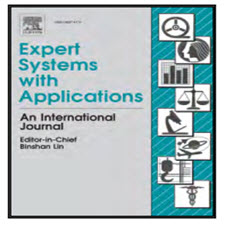توضیحات
ABSTRACT
Reverse logistics initiatives with social commerce not only provide opportunities for firms to create new sources of revenue but also demonstrate their corporate social responsibility via social, green, and environmental activities. Thus, a growing number of companies are attempting to streamline their social commerce platforms to effectively handle reverse logistics. The purpose of this study is to identify the criteria that should be used in designing and evaluating social commerce based reverse logistics processes by firms. We tested the effectiveness of the identified criteria by using them to evaluate the reverse logistics practices of three major global firms that use social commerce platforms. First, we identified the criteria from a thorough review of the literature. Then, we invited five experts to provide (linguistic) ratings of these firms on the selected criteria, using a fuzzy Technique for Order Preference by Similarity to Ideal Solution (TOPSIS) technique with FLINTSTONES (a software tool) to generate aggregate scores for the assessment and evaluation of reverse logistics practices in social commerce platforms. Sensitivity analysis was also provided to monitor the robustness of the approach. The results of the study identified that four dominant criteria (reverse logistics performance indicators) in the social commerce platform: Customer relationship, Usage risk, Reviews, and Quality control.
INTRODUCTION
The forceful drivers for the fast growth of reverse logistics are many, including the increasing shortage of natural resources, environmental law, the realization of backward flow value, ebusiness development, good reputation requirement, customer satisfaction, and the population of information systems (Škapa & Klapalová, 2012). Rogers and Tibben-Lembke (1999) defined reverse logistics as “The process of planning, implementing, and controlling the efficient, costeffective flow of raw materials, in-process inventory, finished goods and related information
from the point of consumption to the point of origin for the purpose of recapturing value or proper disposal” (Roger & Tibben-Lembke, 1999).
Year: ۲۰۱۸
Publisher : ELSEVIER
By : Hui Han , Silvana Trimi
File Information: English Language/ 36 Page / size: 3.56 MB
سال : ۱۳۹۶
ناشر : ELSEVIER
کاری از : هوی هان، سیلوانا تریمی
اطلاعات فایل : زبان انگلیسی / 36 صفحه / حجم : MB 3.56










نقد و بررسیها
هنوز بررسیای ثبت نشده است.